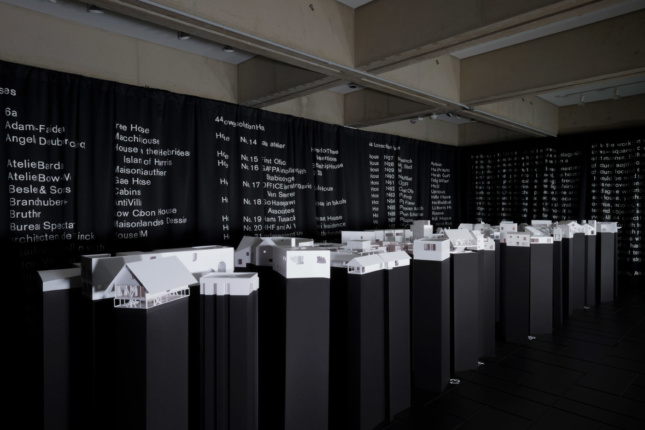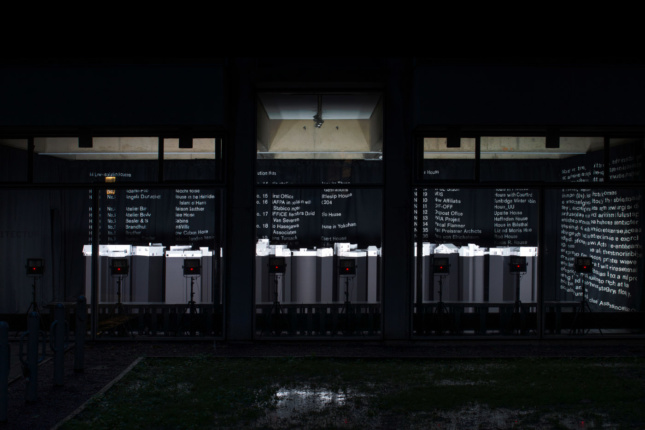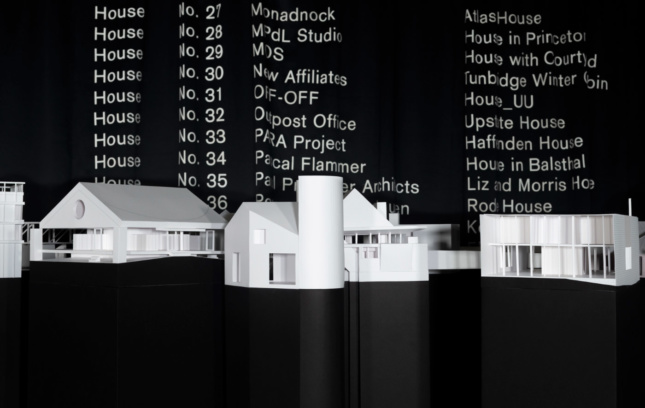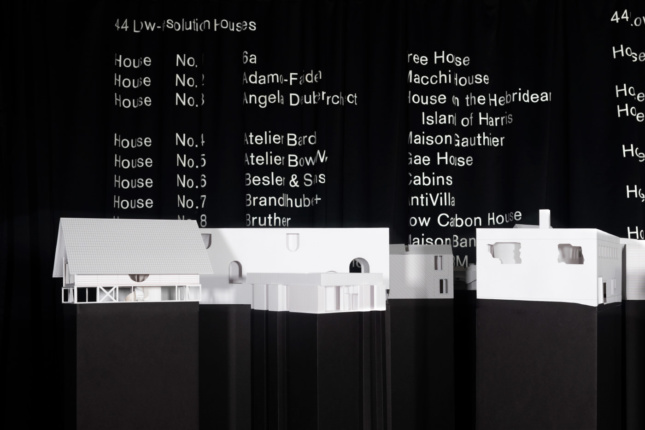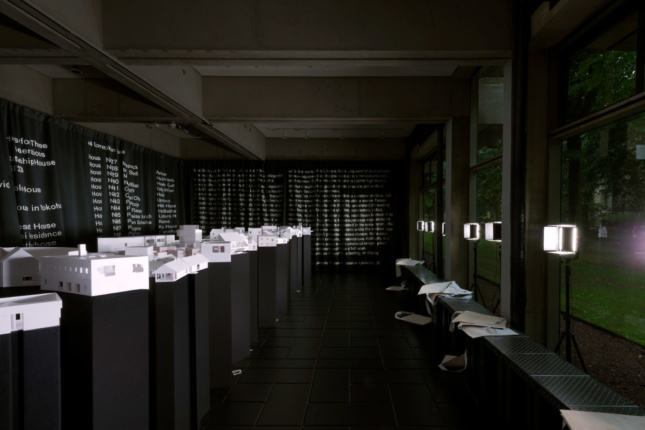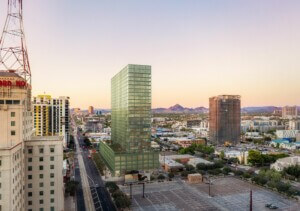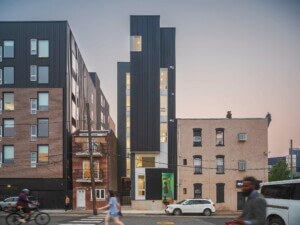The house is one of the most common architectural typologies and has been reinvented over and over throughout history. Whether they are adaptations of the local vernacular to protect against a harsh climate, or experimental, quick-to-be-demolished single-family homes found across Japan, houses have always been fertile playgrounds for architects, status symbols, design objects, dwellings, and hurdles for urban planners.
From now until November 9, the Princeton University School of Architecture will host 44 Low-Resolution Houses, a public exhibition in the North Gallery that attempts to quantify what makes a house a house.
The show brings together 44 different architecture studios, each of them contributing a unique model of a “low-resolution” home. These houses reduce homes to the common elements that can be found throughout vastly different structures such as pitched roofs and typical massings, though some are scaled back to simple geometric shapes. All of the houses were removed from any context and materiality and were oriented north to enable an objective comparison between each model. Each home is treated as an individual object, to be evaluated solely on form, and many resemble existing or theoretical projects (keep your eyes peeled for a triangular model of WORKac’s take on the Earthship).
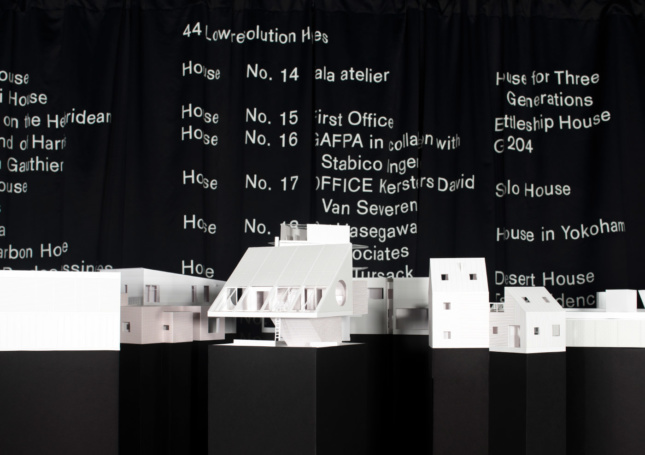
All of the models have been elevated and appear to “float” against a black curtain bearing the name of the architects responsible. As part of the prompt, each team contributed a construction element, material, or product that would best represent their home at full scale.
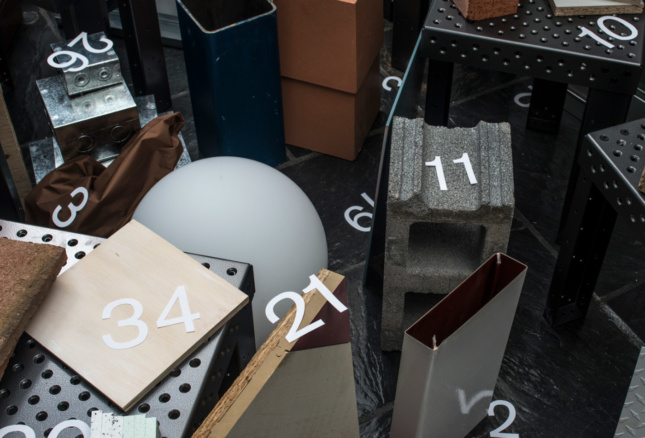
The full list of contributing offices is as follows:
“6a, Adamo-Faiden, Angela Deuber Architect, Atelier Barda, Atelier Bow-Wow, Besler & Sons, Brandlhuber+, Bruther, Bureau Spectacular, architecten de vylder vinck taillieu in collaboration with Joris Van Huychem, Edition Office, Ensamble Studio, Fake Industries Architectural Agonism in collaboration with Aixopluc, fala atelier, First Office, GAFPA in collaboration with Stabico Ingenieurs, OFFICE Kersten Geers David Van Severen, Go Hasegawa and Associates, Hans Tursack, HHF and Ai Weiwei, Independent Architecture, Johannes Norlander Arkitektur, Johnston Marklee, The LADG, Lütjens Padmanabhan Architekten, MAIO, Monadnock, MPdL Studio, MOS, New Affiliates, OFF-OFF, Outpost Office, PARA Project, Pascal Flammer, Paul Preissner Architects, Pezo von Ellrichshausen, Point Supreme, PRODUCTORA, Stan Allen Architect, Tatiana Bilbao Estudio, Tato Architects, T+E+A+M, Tham & Videgård Arkitekter, and WORKac.”
The show was curated by associate professor of the Princeton University School of Architecture, Michael Meredith. MOS designed the exhibition space and Studio Lin contributed the graphic design. The fashion elements were designed by the New York-based Slow and Steady Wins the Race.






